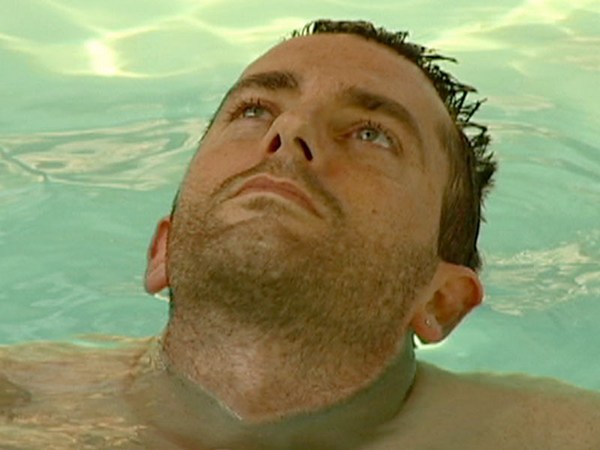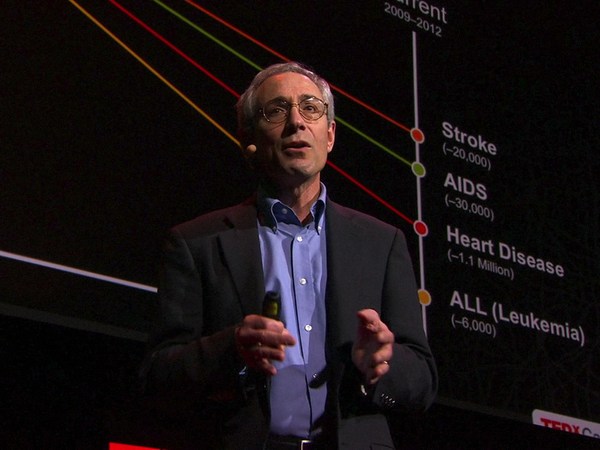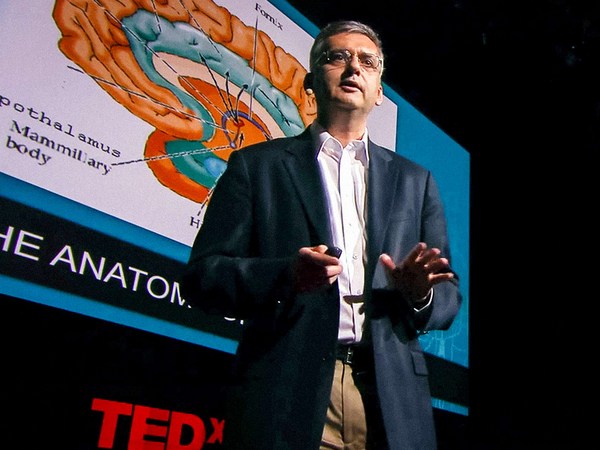When I was 10 years old, a cousin of mine took me on a tour of his medical school. And as a special treat, he took me to the pathology lab and took a real human brain out of the jar and placed it in my hands. And there it was, the seat of human consciousness, the powerhouse of the human body, sitting in my hands. And that day I knew that when I grew up, I was going to become a brain doctor, scientist, something or the other.
Years later, when I finally grew up, my dream came true. And it was while I was doing my Ph.D. on the neurological causes of dyslexia in children that I encountered a startling fact that I'd like to share with you all today. It is estimated that one in six children, that's one in six children, suffer from some developmental disorder. This is a disorder that retards mental development in the child and causes permanent mental impairments. Which means that each and every one of you here today knows at least one child that is suffering from a developmental disorder.
But here's what really perplexed me. Despite the fact that each and every one of these disorders originates in the brain, most of these disorders are diagnosed solely on the basis of observable behavior. But diagnosing a brain disorder without actually looking at the brain is analogous to treating a patient with a heart problem based on their physical symptoms, without even doing an ECG or a chest X-ray to look at the heart. It seemed so intuitive to me. To diagnose and treat a brain disorder accurately, it would be necessary to look at the brain directly. Looking at behavior alone can miss a vital piece of the puzzle and provide an incomplete, or even a misleading, picture of the child's problems. Yet, despite all the advances in medical technology, the diagnosis of brain disorders in one in six children still remained so limited.
And then I came across a team at Harvard University that had taken one such advanced medical technology and finally applied it, instead of in brain research, towards diagnosing brain disorders in children. Their groundbreaking technology records the EEG, or the electrical activity of the brain, in real time, allowing us to watch the brain as it performs various functions and then detect even the slightest abnormality in any of these functions: vision, attention, language, audition. A program called Brain Electrical Activity Mapping then triangulates the source of that abnormality in the brain. And another program called Statistical Probability Mapping then performs mathematical calculations to determine whether any of these abnormalities are clinically significant, allowing us to provide a much more accurate neurological diagnosis of the child's symptoms. And so I became the head of neurophysiology for the clinical arm of this team, and we're finally able to use this technology towards actually helping children with brain disorders. And I'm happy to say that I'm now in the process of setting up this technology here in India.
I'd like to tell you about one such child, whose story was also covered by ABC News. Seven-year-old Justin Senigar came to our clinic with this diagnosis of very severe autism. Like many autistic children, his mind was locked inside his body. There were moments when he would actually space out for seconds at a time. And the doctors told his parents he was never going to be able to communicate or interact socially, and he would probably never have too much language.
When we used this groundbreaking EEG technology to actually look at Justin's brain, the results were startling. It turned out that Justin was almost certainly not autistic. He was suffering from brain seizures that were impossible to see with the naked eye, but that were actually causing symptoms that mimicked those of autism. After Justin was given anti-seizure medication, the change in him was amazing. Within a period of 60 days, his vocabulary went from two to three words to 300 words. And his communication and social interaction were improved so dramatically that he was enrolled into a regular school and even became a karate super champ.
Research shows that 50 percent of children, almost 50 percent of children diagnosed with autism are actually suffering from hidden brain seizures. These are the faces of the children that I have tested with stories just like Justin. All these children came to our clinic with a diagnosis of autism, attention deficit disorder, mental retardation, language problems. Instead, our EEG scans revealed very specific problems hidden within their brains that couldn't possibly have been detected by their behavioral assessments. So these EEG scans enabled us to provide these children with a much more accurate neurological diagnosis and much more targeted treatment.
For too long now, children with developmental disorders have suffered from misdiagnosis while their real problems have gone undetected and left to worsen. And for too long, these children and their parents have suffered undue frustration and desperation. But we are now in a new era of neuroscience, one in which we can finally look directly at brain function in real time with no risks and no side effects, non-invasively, and find the true source of so many disabilities in children.
So if I could inspire even a fraction of you in the audience today to share this pioneering diagnostic approach with even one parent whose child is suffering from a developmental disorder, then perhaps one more puzzle in one more brain will be solved. One more mind will be unlocked. And one more child who has been misdiagnosed or even undiagnosed by the system will finally realize his or her true potential while there's still time for his or her brain to recover. And all this by simply watching the child's brainwaves.
Thank you.
(Applause)





